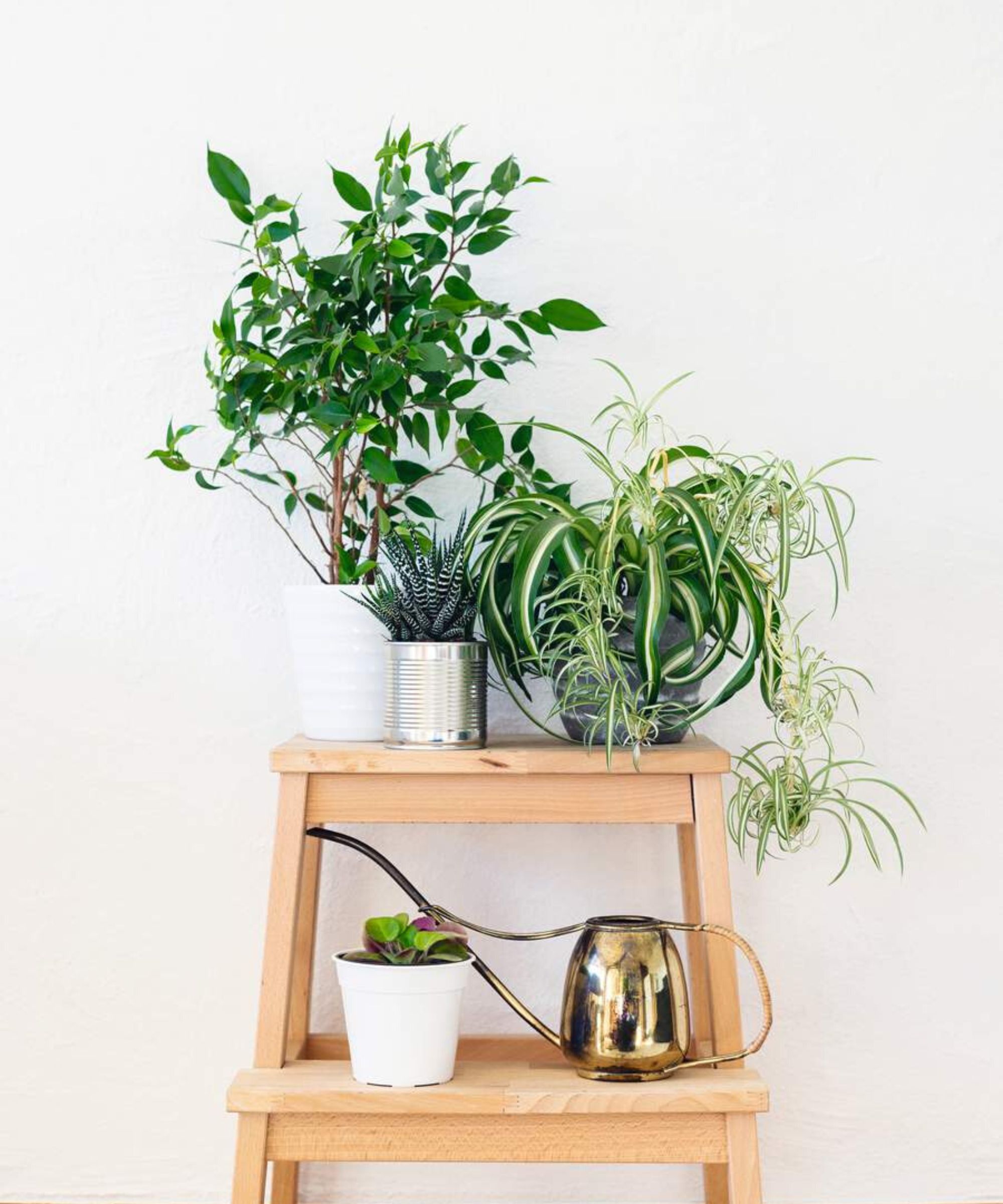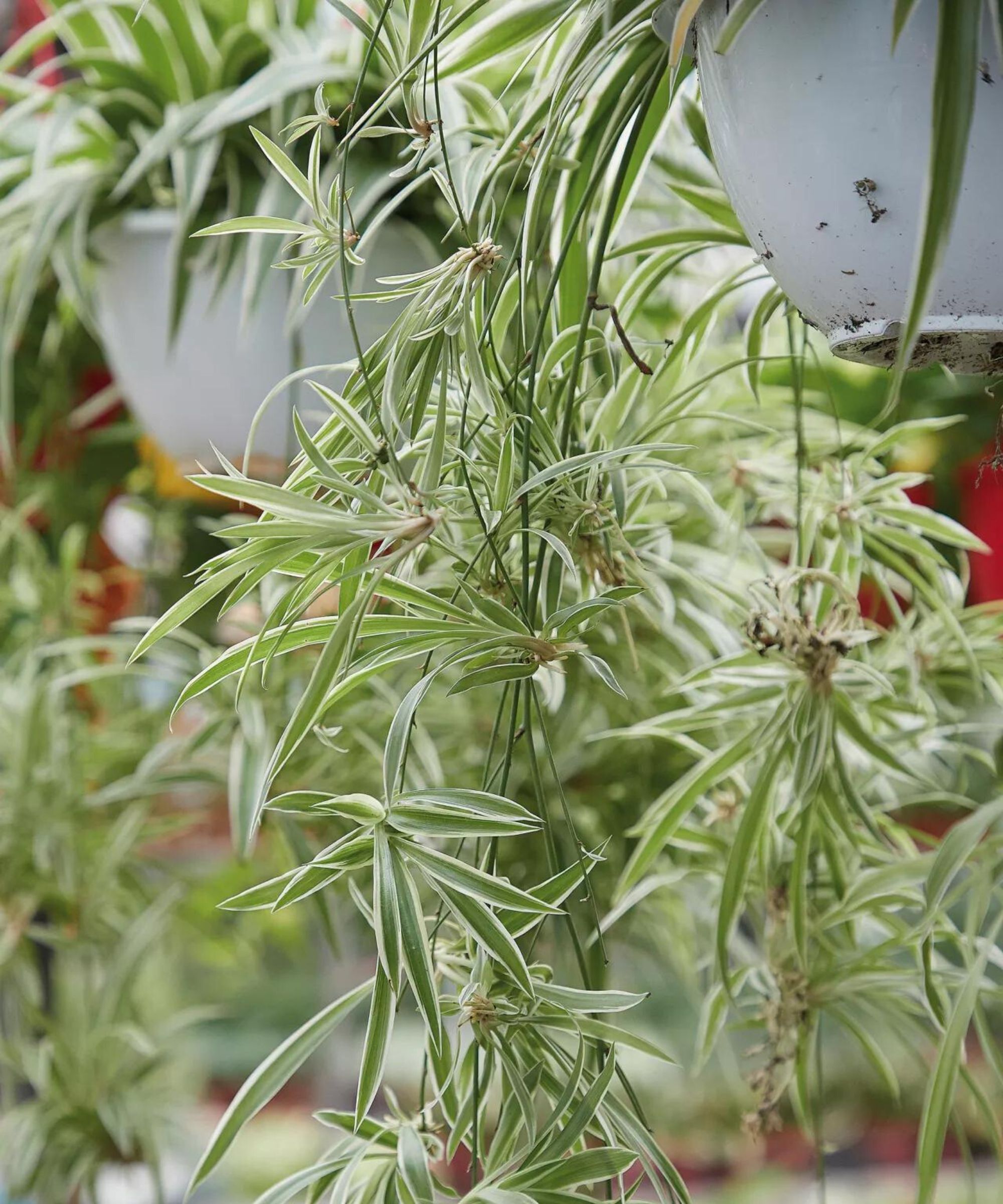Benefits of spider plants – 4 reasons why you should invite this plant into your home
These ornamental houseplants offer several indoor benefits – experts explain how to look after your own


With their sprawling, spindly leaves it is not difficult to see where the spider plant, or Chlorophytum comosum, gets its common name. But do you know that these common ornamental houseplants also offer a number of health benefits?
The benefits of a spider plant make them one of the best indoor plants to introduce to your home.
Here, we explain four spider plant indoor benefits and ask experts for their advice on how to look after them.
Benefits of a spider plant
Spider plants are perfect for any bright home, and are incredibly easy to grow. What’s more, their trailing foliage makes it not only one of the best plants for hanging baskets but also one of the world's most Instagrammed plants.
‘Spider plants are beautifully airy indoor plants with defined leaves, colored in shades of green and some ever variegated,’ explains Megan Cain – one-half of the mother-daughter founders of The ZEN Succulent. ‘It's a staple plant for both green thumbs and plant newbies alike because of its low maintenance vibe and pet-friendly nature, which survives in many situations.’
When it comes to decorating with plants, why not consider houseplants that also benefit you? These fast-growing plants boast a bunch of benefits – here is what you need to know.
1. Use spider plants to help with air purification

The most important spider plant indoor benefit is its ability to filter and purify the air in your home. ‘This non-toxic plant is also perfect for filtering toxins from the air such as formaldehyde, toluene, and xylene – so breath deeper with this plant in your environment’ recommends Megan.
Design expertise in your inbox – from inspiring decorating ideas and beautiful celebrity homes to practical gardening advice and shopping round-ups.
Spider plants are actually one of the best air-cleaning indoor plants according to science. In NASA’s 1989 Clean Air Study, spider plats outperformed other plants in the experiment. Spider plants have also been proven to remove around 95% of toxins from the air around them in 24 hours.
These purifying properties also mean that spider plants are ideal for allergy sufferers - especially as we head into the summer months. The plants can help to remove some of the smallest airborne irritants such as dust mites, pollen, mold spores, and more.
2. Grow spider plants to improve indoor humidity

Spider plants can increase the humidity in your home and are a great natural alternative to a plug-in humidifier. Whilst too much humidity can cause issues around your home, air that is too dry can worsen a range of health issues such as respiratory conditions, skin problems, sore throats, and more.
Spider plants offer this benefit for up to 12 hours after watering as water droplets evaporate.
3. Consider the benefits of spider plants for pets and children

As Megan mentioned, spider plants are also beneficial thanks to their non-toxic nature making them one of the best child and pet-friendly houseplants for your home. Spider plants offer the ability to maintain a natural, green indoor environment when also looking after little ones.
Whilst it is certainly best to try and prevent your little ones and fur babies from nibbling on your houseplants, spider plants do not contain any harmful toxins that could lead to a hospital trip so accidental ingestion is harmless.
4. Place spider plants to help speed up recovery

According to studies, spider plants harness impressive therapeutic benefits. When added to hospital rooms, patients showed improvement in mood and reduced cortisol levels - the hormone responsible for stress. This is linked to the plant’s purifying qualities as it promotes a healthy, toxin-free environment as well as to nature's general ability to improve mood and well-being.
How to look after a spider plant indoors
Spider plants are incredibly resistant plants and thrive on some neglect.
‘Plant lovers should care for this easy-going plant by giving it plenty of bright indirect light and water thoroughly, allowing the plant to dry out in between watering.’ explains Megan. ‘This plant hates wet feet – so do away with any remaining water that might collect in your plant dish.
‘Spider plants like higher humidity, so give it a good mist every week and keep it away from a chilly window spot like a window sill and watch it reward with plenty of new growth for decades to come!'
‘Spider plants are also great beginner plants to practice propagation by offshoot’ she adds. ‘When you see a little mini spider plant (known as a spiderette) hanging from the adult plant, inspect it for tiny roots at the bottom and little knob-like propagates. If it has both of those things, it's ready to propagate! Simply fill a pot that drainage holes with a lightweight potting mix and plant the spiderette within it, making sure the roots are buried underneath the soil.'
Just as with any other houseplant, spider plants are susceptible to common houseplant pests and can still harbor infestations that might damage other plants in your collection. Even when you may not see any clear signs of infestation, make sure to check your plant regularly and thoroughly and maybe even make your own homemade bug spray to keep your houseplant collection pest free.
Are spider plants lucky?
Spider plants are rumored to bring good luck and good health in many eastern cultures. One of many positive Feng Shui plants, the spider plant’s long, sturdy leaves symbolize stability in life and their easy maintainability means they are less likely to wilt or die – meaning that you are less likely to commit the Fend Shui faux pas of owning dead plants.

Chiana has been at Homes & Gardens for two years and is our resident 'queen' of non-toxic living. She spends most of her time producing content for the Solved section of the website, helping readers get the most out of their homes through clever decluttering, cleaning, and tidying tips. She was named one of Fixr's top home improvement journalists in 2024.